Guitar Legends: Stevie Ray Vaughan – a man of simple tastes and impeccable style
Although his top-flight career was cruelly cut short, Stevie Ray Vaughan remains one of the most influential players of modern times. From his gear choices to his playing style, here’s why SRV remains one of the guitar’s true icons.
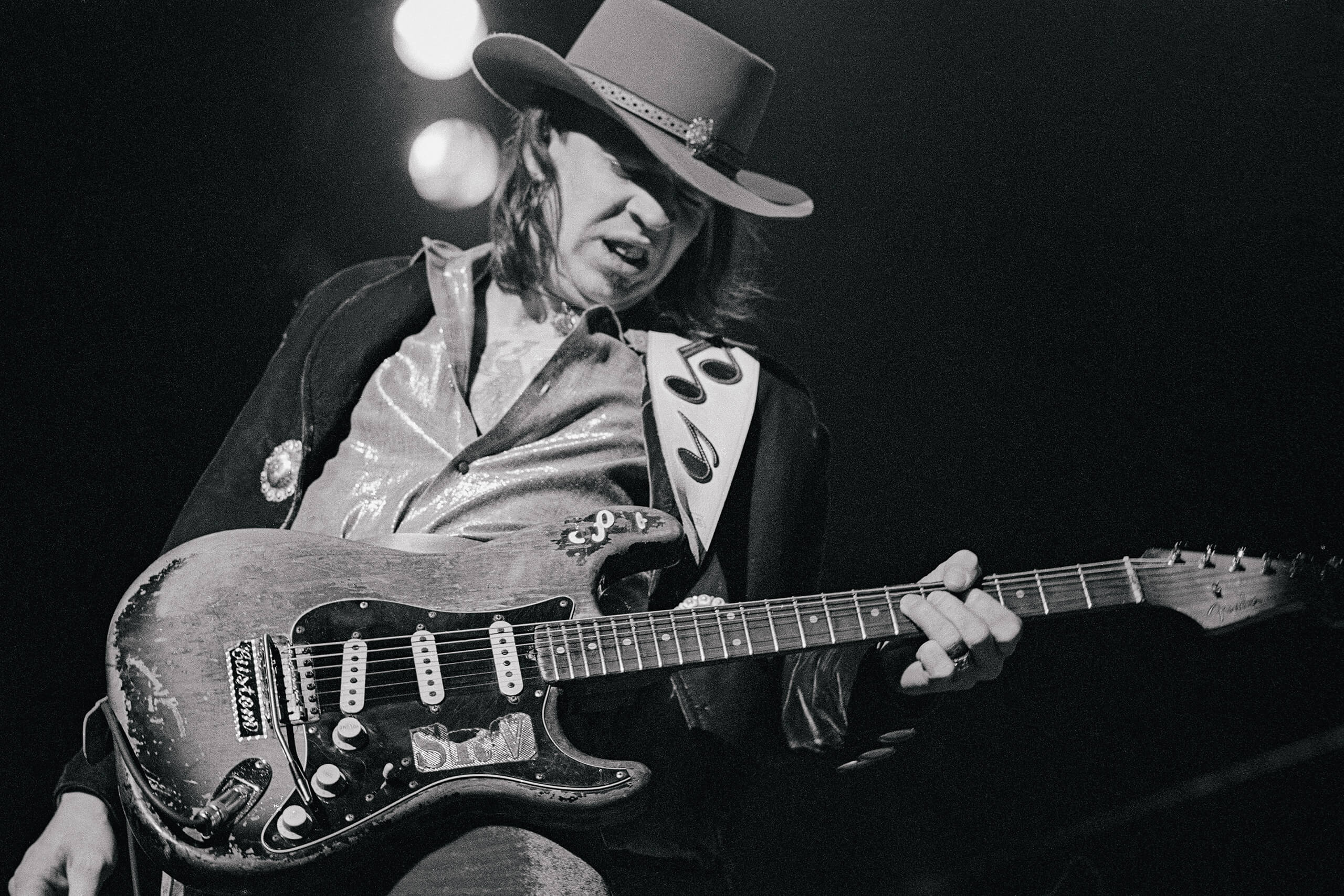
Image: Getty Images
He’d have been remarkable in any era, but Stevie Ray Vaughan arrived just at the right time in the long history of the electric blues. The late 70s and early 80s were not halcyon days for the art form: Eric Clapton’s star had waned with so-so albums such as Another Ticket and Money And Cigarettes, ZZ Top were delving into the sequencer-driven MTV-rock that made them millions but ripped up their roots: the rejuvenation of Buddy Guy, John Lee Hooker and other elder legends was still some way off… the underrated Robert Cray was making waves, but his gentler, more soulful style didn’t deliver the power-blues thrills many guitar players sought. Indeed, in a flurry of hairspray and spandex, hair metal was the 80s habitat stalked by many guitarists with cranked amps seeking to summon the spirit of Jimi.
But Stevie Ray was different. Refreshing, in that he looked even further back. Yes, Hendrix was a huge influence, but he also a keen student of Muddy Waters, Albert King, Freddie King, Chuck Berry, Lonnie Mack and Otis Rush. He incorporated the jazz stylings of Django Reinhardt, Kenny Burrell and Wes Montgomery.
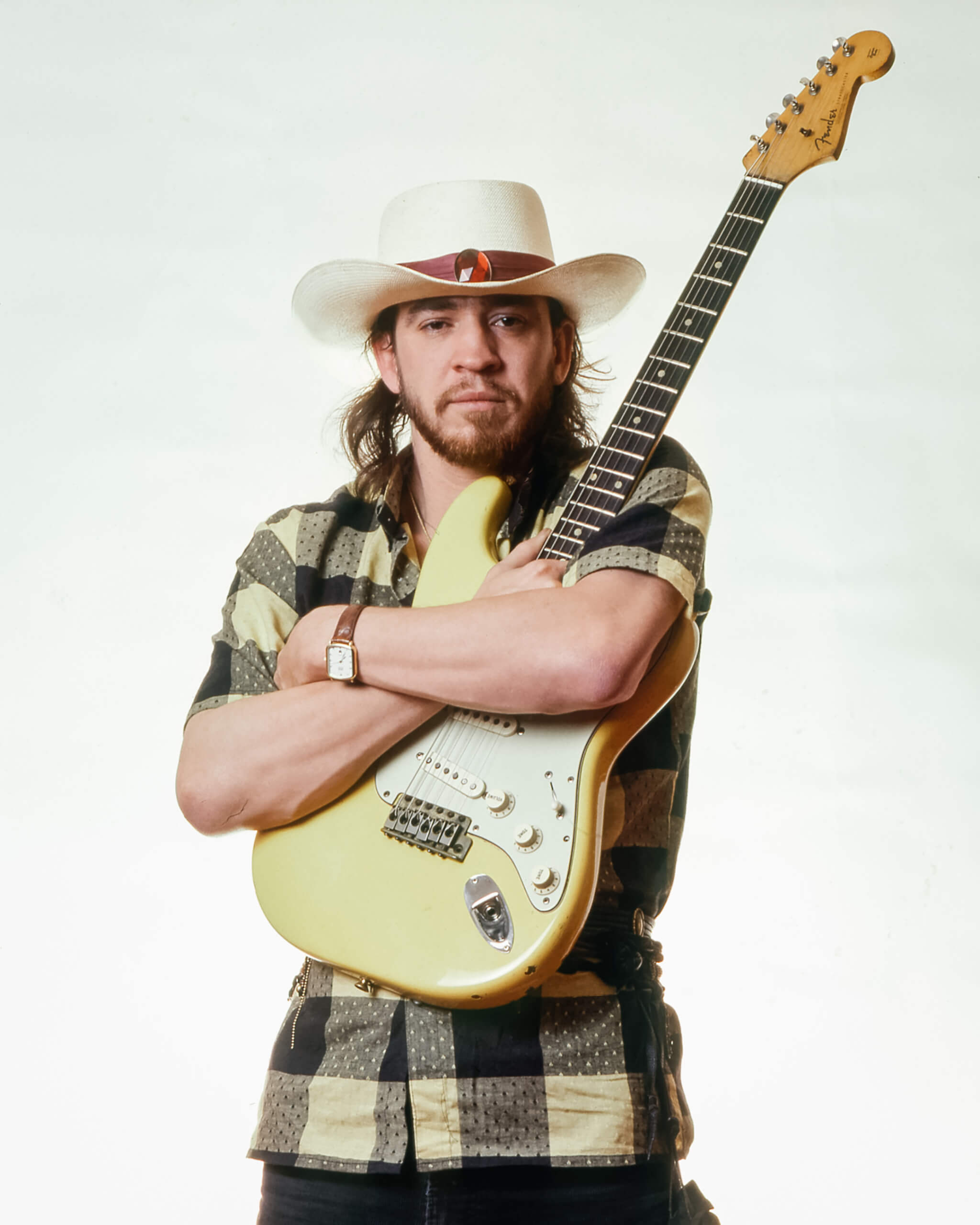
He made his name with his band Double Trouble in the Austin, Texas music scene, and by the turn of the 80s had bridged the gap back to the 60s blues explosion like no other. Mick Jagger was an early admirer – inviting SRV to play a private party – and after a 1982 performance at the Montreux Jazz Festival, David Bowie was immediately another. Vaughan was thus soon in the unlikely position of club-level hero and simultaneous sidekick to superstars.
There’s no doubt SRV’s guesting on Bowie’s Let’s Dance album broke his name in a way no critical roots acclaim ever could. SRV played on six of the eight Let’s Dance tracks, and a solo deal with Epic records was soon sealed (after an offer of free studio time from Jackson Browne). Controversially turning down the offer to tour with Bowie, SRV got back with Double Trouble and delivered a trio of outstanding blues albums for a new era: Texas Flood (1983), Couldn’t Stand The Weather (1984) and Soul To Soul (1985).
Alcoholism and collapse interrupted this incendiary run – filled by the in-concert Live Alive – but Vaughan returned clean and correct with In Step (1989) before tragedy struck. If he was in the right place at the right time for his rise, it was the exact opposite when he was killed in a helicopter crash in 1990. SRV had just completed an August 1990 live show in Wisconsin with those mentors who he could now consider peers: Eric Clapton, Buddy Guy, his brother Jimmie Vaughan, and Robert Cray. At just 35, Stevie Ray Vaughan was taken down just as he reached a personal summit.
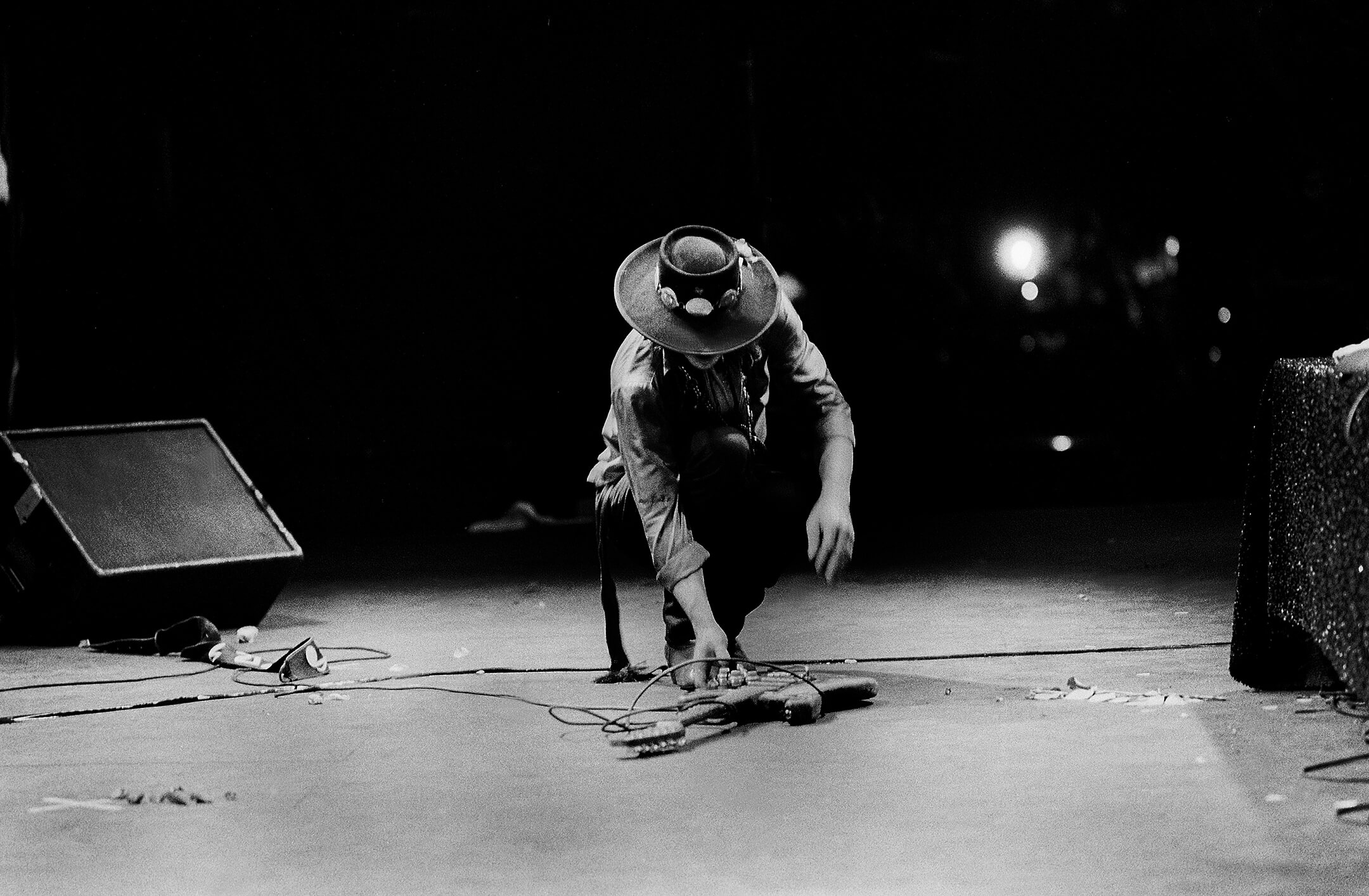
The album he’d only just recorded with brother Jimmie, Family Style, was released a few months after, starting a Hendrixian string of posthumous albums that have kept Stevie Ray Vaughan’s music alive for the last 30 years…
In his own words
“I loved Jimi a lot. He was so much more than just a blues guitarist. He could do anything. I was about 16 when he died. I could do some of his stuff by then but actually I’ve been trying to find out what he was doing more so lately than I was then. Now I’m really learning how to do it and I’m trying to expand on it – not that I can expand on it a whole bunch. But I try.”
“To me, Django [Reinhardt] and Jimi were doing the same thing in a lot of ways. Django would do it with acoustic guitar and Jimi would do it on electric… Neither one of them had anything to build on, they just did it. Django didn’t have any book or anything to borrow from. He wrote the book. Same with Jimi. Nobody was doing those kinds of electronic things he was doing. He just did it.”

The essential gear
On the surface, Stevie Ray Vaughan’s gear was pretty simple: albeit modified to his own personal preferences and played with his unique foibles and inimitable style. But, at its heart, his sound on the basics of a good single-coil Strat-alike, a valve combo and a good overdrive pedal. Here’s the detail of his own gear and the more reasonable choices you have…
Fender Stratocaster ‘Number 1’
Stevie Ray sometimes referred to his main ‘first wife’/‘Number 1’ Strat as “a 59” (as that was the date written on the rear of the pickups) but it was, in fact, a hybrid built with a 1963 body and a late 1962 rosewood (curved fingerboard) neck, which Fender’s Custom Shop replicated it precisely with the SRV Signature Stratocaster model from 1992.
The replica was a work of considerable effort, with master builder Larry Brooks experimenting with over 6000 windings on the pickups and the polarity of the middle pickup reversed to eliminate hum. For just over £2,000, you can still buy it: from 2019 it came in a relic’d version, too. It has all the particulars of SRV’s own model, including that left-handed upside-down vibrato.
Stevie Ray had adopted it in homage to Hendrix and, although it allowed him to operate the trem with his elbow, this is possibly a detail most players can forego! But even vintage versions of the Custom Shop signature are now collectable: we recently saw a relic’d 2004 Number 1 handcrafted by Master Builder John Cruz listed at over £50,000!
So, if you can’t reach for a bona fide SRV signature, what’s next? Fender’s American Original Stratocaster is a fine guitar indeed, but more recent models are perhaps more tasty. The Mexican-made Vintera series is definitely worth a look given the sub-£1k prices: our review is of a 70s-spec Strat, but it also comes in a modified 50s spec. As always, there’s a trade-off: here you get an era-appropriate maple neck, not the rosewood that SRV had on his Number One, and many think that rosewood board gives a bit more Gibson-esque girth to the tone.
A Squier Classic Vibe 60s model is an even more affordable option, looks-wise, coming in at just over £300. If you need more class in the tone – pickups are often an area of compromise on budget guitars – a good option to consider is upgrading your pickups on this or your existing Strat-style guitar. Read Guitar.com‘s quick to replacement neck pickups for a Strat: Seymour Duncan’s Antiquity Hot Neck models aim for SRV-style 1950s Strat sound.
If you want to learn more about vintage Strats in general, have a look at Guitar.com’s 61 and 63 Stratocaster Vintage Bench Test. If you’re looking beyond the Fender/Squier stable, the inspiration for the Vintage V6H Icon electric is clear.
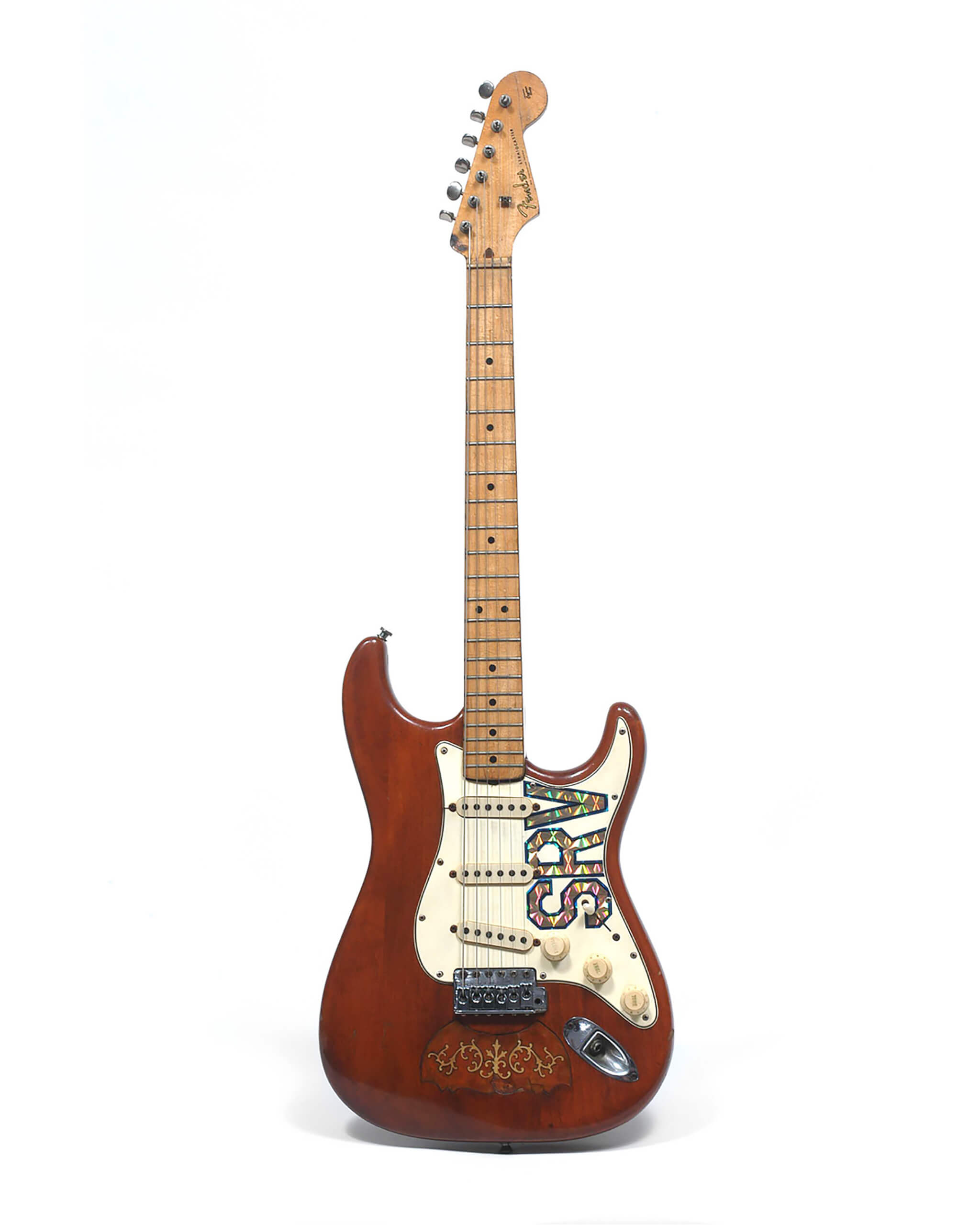
Yellow, red, Lenny and others…
Stevie Ray was a man of simple tastes, really, with most of his other Fenders being of a similar stripe to Number 1, but each has become iconic and beloved by fans and guitar aficionados in their own way.
Yellow was a 1959 Stratocaster formerly owned by Vanilla Fudge’s lead guitarist, Vince Martell: this is the one with the SRV decal under the strings.
Red was a 1962 sunburst Fender Stratocaster bought from Charley’s Guitar Shop in late 1983 (the cheques were starting to roll in by this point!), though Stevie Ray had it repainted by Fender in Fiesta Red as a custom colour. It later had his SRV decal applied and a left-handed neck fitted (in 1986) in another visual tip of the hat to Hendrix… that neck was briefly fitted to Number One in 1989, which does lead to some confusion when you’re looking back at pictures from the era!

Lenny is perhaps the most famous of Stevie’s ‘other’ Strats – a 1963 or 1964 Stratocaster, bought for Stevie Ray for his birthday by his wife, Lenora. Originally Three-tone Sunburst with a rosewood neck, it was later stripped down to a dark natural finish and re-fitted with a mid-50s-style maple neck, reportedly given to him by Billy Gibbons. Fender Custom Shop produced a limited-edition run of Lenny replicas in 2007, but they are also now highly-priced second-hand.
Amps, effects, etc…
For amps, Stevie Ray kept things relatively straightforward: he usually picked from 60s vintage black-panel Fender Super Reverbs, a Marshall Club & Country combo amp (with 2×12″ JBL speakers) and a pair of black-panel Fender Vibroverb amplifiers (numbers five and six off production line), each with one 15-inch speaker. Such original vintage boxes will cost a lot, though.
For modern reissues, a Fender 65 Super Reverb is just under £2k. Taking into account modern tech, be sure to check out the new Fender Tone Master Twin Reverb and Deluxe Reverb. These are under £1k and although different specs to SRV’s originals, they are enticing, affordable routes to classic blackface tone.
Needless to say, there are software emulations of SRV / Fender tone via the likes of AmpliTube if you run a PC-rig for recording, although a lot concentrates on earlier Tweed-era tones.
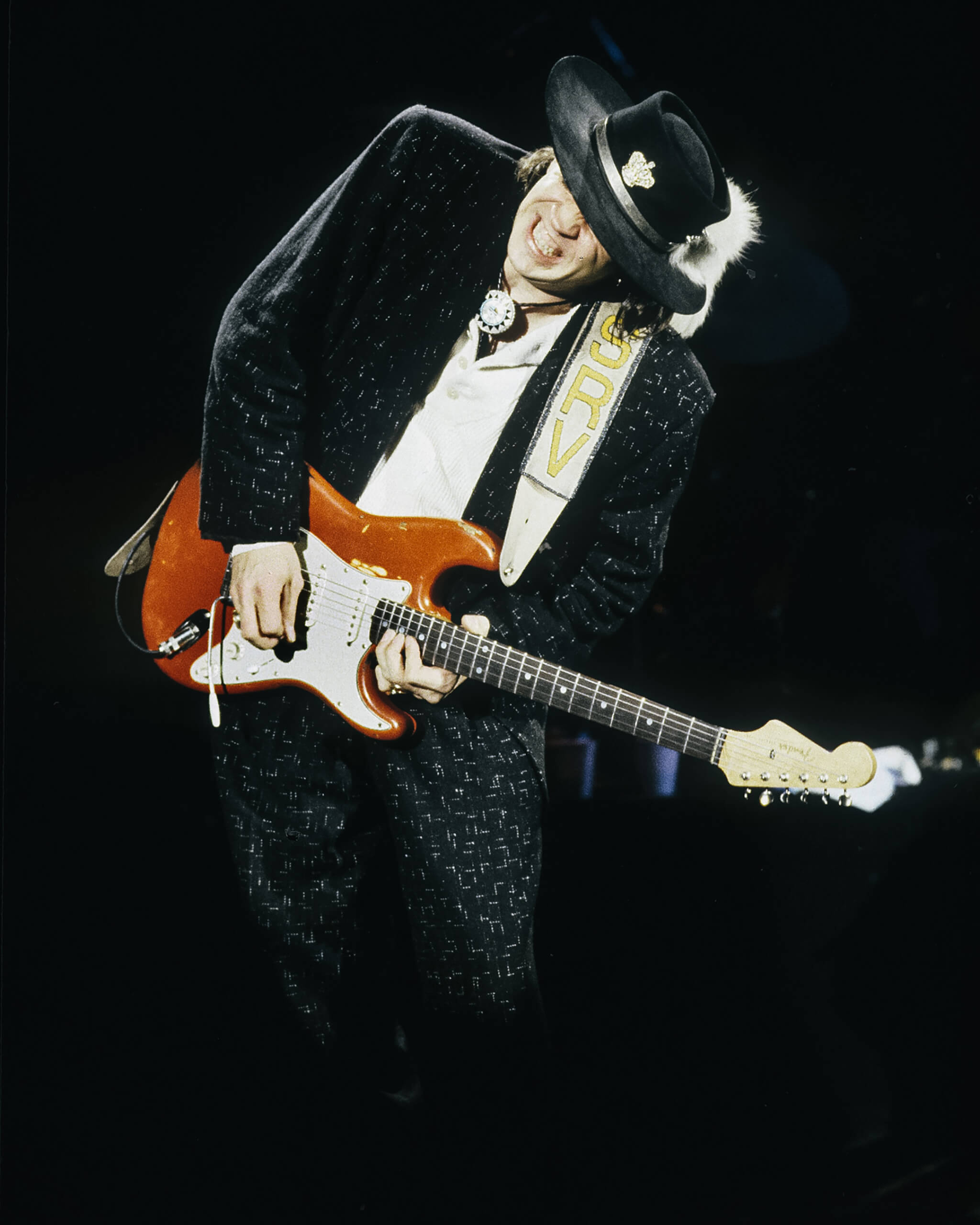
It’s always worth bearing in mind that Stevie Ray saw things somewhat uniquely, though: he once said, “I use the Fenders for distortion and the Marshall for clarity” – the opposite of what you’d expect. His core sound generally had a medium crunch, with the bass rolled off and the mid boosted.
For effects, Stevie Ray is often associated with that most obiquitous of drive pedals, the Ibanez Tube Screamer – in fact there’s an argument to be made that the humble TS would be a lot less popular than it is today if not for Stevie’s patronage. Despite modern tone-hounds often zeroing in on certain models of Screamer, Stevies tended to update to whatever the latest model was, using TS-808, TS9, and TS10 models at various times.
The early ‘mojo’ of original 80s models means premium prices and unless you have cloned his fingers, you can probably settle for current incarnations and variations: here’s a couple of Maxons vs vintage Ibanez. An authentic new Ibanez TS9 is around £115. Be sure to steer away from distortion pedals; you want an overdrive.
For wah pedals, Stevie Ray favoured Vox. Here’s Guitar.com’s wah buying guide and a history of wah.
Essential listening
It’s simplistic to call SRV ‘just’ a blues player. He incorporated a lot of funk and jazz, too, leading to the crystalline, Wes Montgomery-inspired Riviera Paradise, the Django-alike Lenny, the funky Couldn’t Stand The Weather and more. Our Guitar.com playlist includes a number of covers to show how Stevie Ray brought his own voice to familiar tunes…
Playing style
This, perhaps, is the hardest bit of all! Like every guitar great, it was how (not what gear) Stevie Ray played that made him unique. He generally tuned to E♭. He also played 13 gauge strings which will be insanely challenging for most (and even he later dropped down a size from such cables). A set of 8s is likely too lightweight but 10-46 as a minimum should be a good compromise. He had a bold right-arm technique, too: he was a physical player.
Courtesy of Your Guitar Academy, here’s a great lesson showing SRV’s right-hand technique which is essential for getting the correct amount of “air” in his sound.
And here’s another in-depth lesson showing you how to play Pride And Joy.
For the fundamentals of some of some his blues licks, be sure to look at our Essential Blues series on the likes of playing a shuffle and, for jazzier sounds, extending chords.
For more features, click here.
